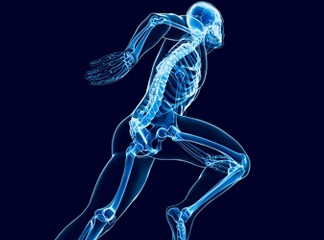Introduction
When it comes to maintaining a healthy body, our joints play a pivotal role. They allow us to perform daily activities, exercise, and even relax. However, with the stresses of modern life, many individuals find themselves experiencing joint pain or instability. This is where osteopathic medicine shines. An osteopath uses a holistic approach to enhance joint stability and strengthen the body's musculoskeletal system. If you're in Southlake, you might be searching for an osteopathic doctor Southlake who can help you alleviate back pain or other joint-related issues.
In this comprehensive article, we will explore various osteopathic techniques for joint stability and strengthening. Through understanding these methods, you’ll not only gain insight into how they work but also how they can be effectively integrated into your wellness routine.
Osteopathic Techniques for Joint Stability and Strengthening
Osteopathic techniques focus on the interrelation between the body’s structure and function. The primary aim is to improve overall health through manual osteopathic doctor therapy aimed at restoring proper alignment and enhancing movement patterns.
Understanding Osteopathy: A Holistic Approach
Osteopathy emphasizes the body's ability to heal itself. An osteopathic doctor takes a holistic approach by considering all aspects of a patient’s life—physical, emotional, and environmental factors that contribute to their health status. This means that treatments are tailored specifically to meet individual needs.
What Is an Osteopath?
An osteopath is a trained medical professional who specializes in osteopathic medicine. They employ hands-on techniques to diagnose and treat conditions affecting the musculoskeletal system.
Why Choose an Osteopath Over Traditional Medicine?
While traditional medicine often focuses on symptom management through medication, osteopathy seeks to address the root cause of issues. For example, instead of merely prescribing painkillers for back pain, an osteopath Southlake TX may utilize manipulative therapy to realign the spine and improve function.
Key Osteopathic Techniques for Enhancing Joint Stability
Osteopathic treatments encompass a range of techniques designed to enhance joint stability through muscle strength training, flexibility exercises, and manual manipulation.
1. Myofascial Release
Myofascial release involves applying gentle sustained pressure into the connective tissues (fascia) surrounding muscles and joints. By doing so, this technique reduces tension in tight areas which can lead to improved mobility and stability in joints.
- Benefits: Alleviates chronic pain Improves circulation Enhances flexibility
2. Muscle Energy Technique (MET)
MET is a form of manual therapy that involves voluntary contraction of muscles against resistance provided by the doctor. This technique focuses on increasing muscle strength while simultaneously enhancing flexibility.
- How It Works: The patient is instructed to contract their muscle while the osteopath applies counterforce. This method promotes relaxation of tightened muscles around joints.
3. Strain-Counterstrain Technique
This technique involves positioning the body into a position of comfort that alleviates discomfort from strained muscles or ligaments. By doing so, this method enhances function by allowing normal alignment without causing further pain.
- Application: Particularly beneficial for patients with acute back pain or chronic neck stiffness.
Strengthening Exercises Recommended by Osteopaths
After addressing misalignment or tension using manual techniques, it’s crucial to engage in specific exercises designed by an osteopath to strengthen joints further.
1. Resistance Training
Utilizing bands or weights helps build muscle strength around vulnerable joints like knees or shoulders.

Example Routine:
| Exercise | Sets | Reps | |---------------|------|------| | Band Pull Apart | 3 | 12-15 | | Dumbbell Squats | 3 | 10-12 | | Lunges | 3 | 10 each leg |
2. Core Stabilization Exercises
A strong core stabilizes your entire body which consequently supports your joints during movement.
Effective Core Exercises:
- Planks Bird Dogs Dead Bugs
Integrating Stretching into Your Routine
Flexibility plays an equally important role in maintaining joint health alongside strengthening exercises.
Dynamic vs Static Stretching
It’s essential to distinguish between dynamic stretching (moving stretches) and static stretching (holding stretches). Both have distinct advantages:
- Dynamic stretching increases blood flow before workouts. Static stretching improves flexibility post-exercise.
Recommended Stretches:
- Hamstring Stretch Quadriceps Stretch Shoulder Cross-body Stretch
The Role of Alignment in Joint Health
Proper alignment is crucial for optimal function throughout our bodies' systems; poor alignment can lead to dysfunctions resulting in pain or discomfort within joints.
Common Misalignments Causing Pain
Misalignments can occur due to poor posture during daily activities:
Slouching while sitting at work. Incorrect lifting techniques. Uneven weight distribution when standing or walking.FAQs About Osteopathic Techniques
Q1: What conditions can an osteopath treat?
An osteopath can treat various musculoskeletal conditions such as back pain, neck pain, migraines, sports injuries, arthritis, etc., leveraging hands-on techniques combined with lifestyle advice.
Q2: How long does an osteopathic treatment session last?
Typically sessions last between 30 minutes to one hour depending on individual needs and treatment complexity involved in managing specific ailments like back pain or joint issues.
Q3: Is osteopathy safe for everyone?
Yes! Osteopathy is generally safe; however specific populations such as pregnant women should consult with their healthcare provider before beginning any new treatment regimen including visiting an osteopath Southlake TX for therapeutic care.

Q4: Can I receive treatment from an osteopath if I’m currently under another doctor's care?
Absolutely! Many patients benefit from receiving complementary therapies alongside their existing healthcare plan; always inform both practitioners about ongoing treatments for cohesive care planning!
Q5: Will my insurance cover visits to an osteopath?
Coverage often depends on your insurance policy; it's advisable always check beforehand if claims are eligible covering sessions with licensed professionals like your local doctor specializing in holistic practices!
Q6: How do I know if I need joint strengthening exercises?
If you experience frequent joint discomfort during physical activities or notice limited range-of-motion accompanied by stiffness—these could indicate weakness warranting specialized strengthening programs recommended by knowledgeable providers such as experienced doctors practicing within Southlake region!
Conclusion
In conclusion, understanding how various osteopathic techniques contribute towards improving joint stability allows individuals struggling with musculoskeletal issues gain greater control over their health journey through empowering approaches that focus holistically rather than solely relying upon medications alone! If you're considering incorporating these methods into your routine—reach out today! Whether it’s finding an osteopathic doctor near you or taking proactive steps towards better health—remember that every journey begins with one small step forward toward achieving optimal well-being!
By integrating these insights into your wellness regimen under guidance from skilled practitioners like those available at clinics across Southlake community—you’re sure set up successfully navigating challenges ahead when it comes maintaining strong stable functioning throughout entirety body's intricate framework!